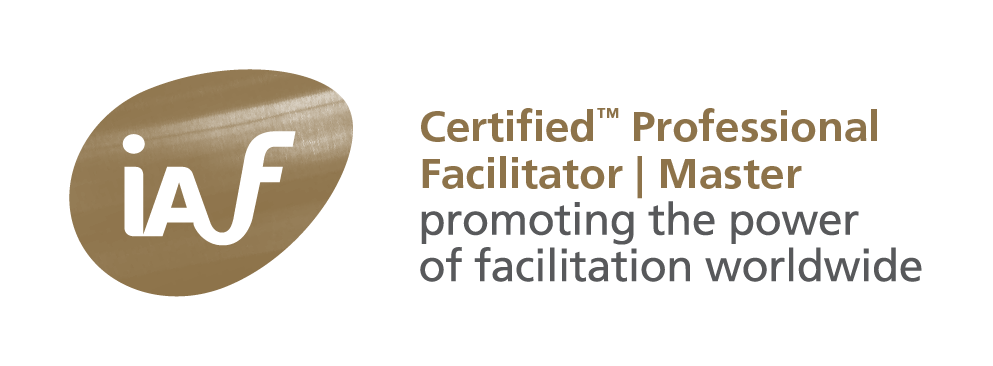Harish writes in his blog with”POSWID or “Purpose Of a System Is What It Does” is a famous dictum in Cybernetics. This is attributed to the Management Cybernetician Stafford Beer.” He implies that a purpose of a system, like beauty, is in the eye of the beholder. What does this mean? Here are my additions.
Any purpose is a purpose proposed by a proposer. Like “‘Everything said is said by an observer to an observer who could be him/herself‘ (Maturana and Varela, 1980; p. 8)” The proposer proposes a certain use or purpose of his proposition. A proposer proposes with a purpose . In any statement, a purpose, an intention or a meaning is being proposed.
The words “purpose” and “propose” have the same roots: to place (pose) in front (pur of pro). In seeing, perceiving, one always notices “purposes” or uses of what one perceives. And what one perceives is always “placed in front”. So everything one perceives “proposes” purposes, from which one selects a purpose one needs or requires to use. “You see what you want to see.”
For instance, you perceive the purpose of a chair “instantly”, when you require a seat. When you need to pick up a book from the top shelve, the purpose becomes “chair-as-ladder”. Or when you need to place the book somewhere, the stool will be used as a table. Sitting makes the object into a chair.
This is what I call “metaphor-in-use”. One sees uses of the thing, object or person and uses what one sees. The figure in the figure of speech, contained in the word “metaphor”, consists of its uses. Unlike AI, human beings, don’t “see” things or objects. One perceives their (potential) uses. One appropriates, so to speak, the properties. Again, of course, the word “purpose”. One carries over relationships between one-self and uses or properties of things perceived.
What do you see in this picture? And what uses do you see? Tacitly, subjectively, you perceive the object while sensing attributes. You can “feel” its surface, it’s weight, consistency, temperature. You can tell, propose, how to use it. Only in actual usage of a thing perceived, it becomes an object with a purpose. One can only perceive one’s world purposefully, usually.
In using language-as-a-tool, one does the same. One communicates tacitly the “purpose” of one’s words: intended uses of the words as proposed by the proposer, also known as meaning.
Tacitly one assumes that the meaning of words conveys the meaning intended by the sender. This used to be called the Helsinki-principle. Nowadays, we’ve got another Helsinki principle, but this Helsinki principle is still implied.

One usually uses the conduit metaphor of language. Meaning, one assumes, is in the words, making up meaningful sentences. Like stuff inside a container. You only have to unpack the container and know the uses of the words used.
As you can read, with the Helsinki principle one has to accept some implicit (“prior”) set of assumed uses, a set of implicit rules, like the check box on a web page. Nobody reads those and one assumes one can agree with these. I’ve called this the metaphor-espoused. The metaphor adopted, attached to, “married”. In using words, one tactility adopts and adapts to meaning intended. However, one also implicitly accepts the terms and conditions. “Every sign is a request for compliance”.
In using a metaphor-espoused (“words, words, words”) one codes or translates the metaphor-in-use into words while referring, or decoding, back to the metaphor-in-use. In doing so, applying the Helsinki principle, one uses the existence of an accepted set of rules and of one’s acceptance by the “utterers”.
This leads to a strange-loop, or “double bind”, or the paradox of expression. In order to use words, one has to “subscribe” to the correct use of words. If you won’t so this, you don’t belong. The definition of a word, defined by a community of word users, also defines the community of word users.
With using a chair, change in purpose becomes obvious – and explicit. With using words, this requires induction. We experience words as “ambiguous”, because meaning arises from the use, the relationship with the object (Watzlawick, Pragmatics of Human Communication) and not from the object (word) itself. We can say “a rose, is a rose, is a rose”, but one’s uses determines its meaning: “I love you”, “happy birthday”, “I’m sorry”, “our house is a very fine house, …”…
I’m also using the words “in-use” and “espoused” referring to Chris Argyris’ Model I and Model II and Theory-in-use and Theory-espoused. He shows (“Strategy, Change and Defensive Routines”) how in organizations (organized groups of people) we’re used to use “defensive reasoning”. Protect the current situation, minimize loosing face, win/loose tactics, as in debates and discussions.
The status-quo needs to be maintained – or else …. . One uses a difference between theory-espoused (“we’re open and honest here”) and theory-in-use (you know, one may be punished for telling the truth about … ), while the difference between these two is covered-up (“no, honestly, you can say what you think”) and that the cover-up is covered-up ( – silence -). You can use any word you like, but you can never say “that”.
In the same way, one reduces differences between word-in-use and word-espoused. Ambiguity has to be reduced. There’s only correct way to use a word, or else… . You can be evicted because of using a “wrong” word.
With metaphor-in-use, ambiguity is always present in the presented objects through the divers uses. Like I said: a chair can be used as a seat, a stool, a ladder, as a place holder, to chair a meeting, … . A metaphor emerges from its uses (in terms of McWhinney: from sensory to mythical and back to sensory). Ambiguity is the source of innovation, necessity, the mother of invention. Evolution – a side note – uses “old” DNA in different, “wrong” applications.
In using language one also has another purpose: maintaining coherence in the group of people using the language to define themselves. Meaning of words used to induce “belonging”. When using the same definitions and rules, one reduces uncertainty, ambiguity, doubt, insecurity and produces what one may call unity. Especially, when there exists a (perceived or actual) threat, to be used as power difference. Like success to the successful, this leads to power to the powerful.
You can see this everywhere, most strongly in wars, for instance the current situation between Ukraine and the Russian federation. Meaning is not about facts versus fictions – both are, as I usually say derived from facere, to make. Just like we “make up” language.
It’s not about the words, but one’s uses in transmitting intentions. And structure (!) of the conflicts is always the same: the meaning is in the words. What needs to be done is to change this structure.
By adopting the toolmaker metaphor in communication, one always assumes meaning is being constructed through using tools: metaphor-in-use. In dealing with others, always assume one “doesn’t know” what one is saying. Also you.
We have to “figure out” what we’re meaning by what we’re saying. Using “clean language”, “figures of speech” (I’m usually using LEGO-figures, literally) or investigating the structure of the metaphor-espoused – structure follows use. The latter can be done through applying the model (or legend) proposed by Will McWhinney. Grammars of engaging.
So in proposing (using, expressing) words, one also proposes a (“one”) correct use – a purpose – of the words, which is derived from the common use of the community. We usually say that the context defines the meaning of words (purpose), however, there is no context outside the community using the words, (“il n’y a pas de hors-texte”). This also induces the third purpose: inducing coherence of the community.






